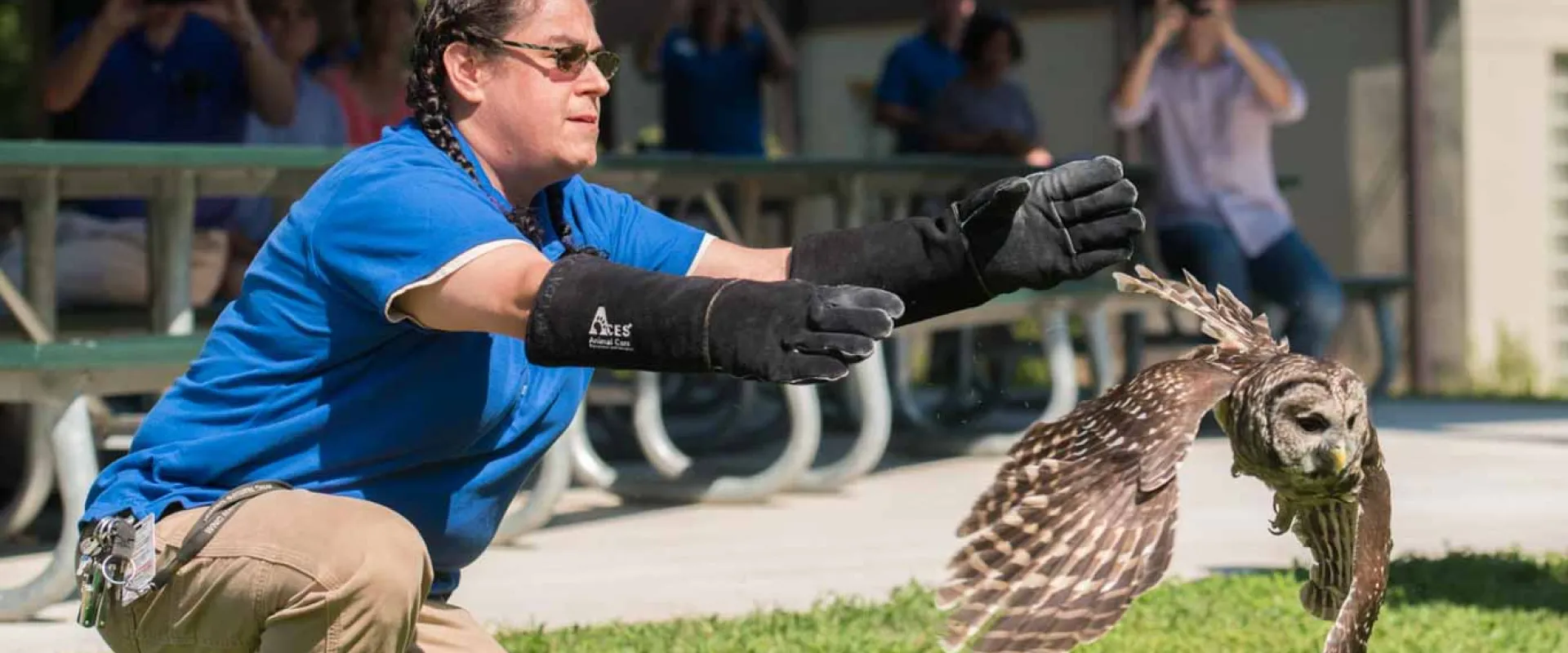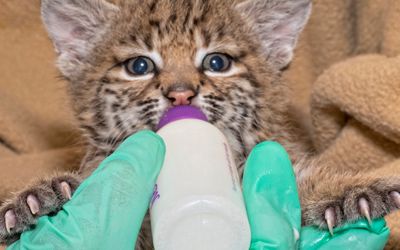How Burlington Wildlife Rescue is Making a Distinction in Our Community
How Burlington Wildlife Rescue is Making a Distinction in Our Community
Blog Article
Usual Obstacles and Solutions in Urban Wildlife Removal Efforts
Urban settings existing distinct difficulties for wild animals management experts tasked with getting rid of or handling wild animals populations. These challenges frequently converge with ethical considerations, legal structures, and the safety of both pets and humans. Public resistance and mistaken beliefs additionally complicate these initiatives, requiring innovative, non-lethal solutions and robust community outreach. Understanding the complexities included in urban wildlife elimination is important for establishing approaches that stabilize human safety and security with wildlife welfare. What methods have proven most reliable, and exactly how can areas be much better engaged to support these efforts? This discourse seeks to uncover the elaborate balance needed for successful urban wildlife monitoring.
Moral Wildlife Monitoring
Resolving the intricacies of honest wild animals monitoring needs an equilibrium between human passions and the conservation of wild animals communities. In urban setups, this balance becomes significantly difficult as human growth encroaches on wildlife habitats, leading to frequent human-animal communications. Moral wildlife monitoring in these settings demands approaches that prioritize humane therapy of animals while reducing prospective disputes.
Among the core concepts in moral wild animals administration is the avoidance of harm. This involves using non-lethal methods for wildlife removal, such as exemption techniques that protect against pets from going into human houses, or utilizing deterrents that lead them away from metropolitan locations. Wild animals professionals are tasked with utilizing approaches that reduce stress and injury to the animals, ensuring their well-being is considered alongside human safety.
It is important to analyze the environmental roles of urban wildlife and how their elimination could affect neighborhood biodiversity. Ultimately, efficient moral wildlife administration includes cooperation in between guardians, policymakers, and the public to maintain city environments.
Browsing Legal Limitations
Browsing the legal landscape of urban wild animals elimination presents a complicated layer to the already tough task of moral wildlife monitoring. These regulations vary dramatically across regions, requiring complete understanding and conformity from those involved in wildlife management - wildlife removal Burlington.
One major difficulty is the constant evolution of these legislations, usually driven by environmental changes and social perspectives in the direction of wildlife preservation. Thus, professionals must continue to be informed regarding present lawful standards and upcoming legal changes. Non-compliance can lead to substantial fines, legal ramifications, and reputational damages.
Structure relationships with wild animals firms and lawful specialists can provide valuable understandings and advice. Hence, understanding and sticking to legal frameworks is not merely a procedural necessity yet a basic element of sustainable and liable city wild animals administration.

Security in Removal Practices
Guaranteeing safety in wildlife elimination techniques is paramount to protecting both animal and human welfare. These efforts need a balanced technique that lessens threat while attaining the preferred end result of relocating pets from metropolitan settings. A main worry in wild animals elimination is the capacity for injury or illness transmission to human beings, demanding making use of personal protective tools (PPE) such as safety glasses, masks, and handwear covers. Trained experts should handle eliminations to prevent worsening the situation, as inexperienced individuals may unintentionally hurt themselves or the animals included.
Safe elimination practices also include using gentle traps designed to avoid injury. These catches should be regularly kept an eye on to ensure that animals are not left in distress. Additionally, it is important to stick to standards that determine the appropriate handling, transport, and release of captured wildlife, making sure that the pets are returned to suitable habitats where they can thrive without posing further risks to city environments.
In addition, education and training for those involved in wild animals removal are crucial. This guarantees that all parties understand the current safety procedures and strategies, thus minimizing the chance of mishaps and advertising a harmonious coexistence web link in between urban occupants and wildlife.
Cutting-edge Deterrent Solutions
While security in wild animals removal is vital, protecting against experiences with city wildlife with cutting-edge deterrent options can significantly minimize the requirement for such interventions. Urban environments, with their abundance of food and shelter, often draw in wildlife like squirrels, pigeons, and raccoons, bring about possible disputes. Developments in technology and layout have actually paved the way for effective and creative deterrent methods that lessen wildlife presence without harm.
One such solution is using ultrasonic devices, which give off high-frequency sounds inaudible to humans however undesirable for numerous wildlife varieties, driving them far from certain areas. Furthermore, motion-activated lawn sprinklers can hinder pets by surprising them with unexpected ruptureds of water, effectively preventing their return. These gadgets are specifically beneficial in safeguarding gardens and green rooms from foraging pets.

Moreover, the integration of wise lighting systems that adjust their illumination and shade can interrupt the nighttime activities of particular wild animals, lowering their comfort in metropolitan setups. Physical obstacles, such as bird spikes and nettings, remain to function as functional deterrents, preventing animals from nesting or roosting in unwanted areas. Stressing humane and environmentally friendly approaches, these advancements hold assurance for sustainable city wild animals administration.
Area Education Campaigns
Recognizing the relevance of neighborhood education efforts is critical hop over to these guys in dealing with urban wildlife challenges properly. Such initiatives play a significant function in promoting coexistence in between humans and wild animals in metropolitan settings by increasing understanding and advertising accountable behaviors. Enlightening residents concerning regional wild animals types, their habitats, and actions can lower misunderstandings and anxiety, causing more enlightened decisions regarding wildlife administration.
Community education initiatives commonly include workshops, workshops, and outreach programs developed to involve residents of every ages. These campaigns can focus on useful recommendations, such as securing waste bins, mounting bird-friendly structures, and preventing feeding wild animals, which assists stop drawing in pets into metropolitan locations. By sharing understanding regarding the eco-friendly roles of wildlife, communities can change viewpoints from watching animals as hassles to identifying their value within metropolitan communities.
Residents who recognize the importance of wildlife find out here now conservation are a lot more likely to support humane removal strategies and environment defense steps - animal control Burlington. Efficient community education needs cooperation between regional authorities, wild animals specialists, and neighborhood leaders to develop customized programs that attend to particular metropolitan wild animals concerns.
Conclusion
Urban wild animals elimination needs a complex approach, attending to moral management, legal compliance, and safety in elimination techniques. Effective city wild animals management pivots on collaboration amongst residents, authorities, and experts, ensuring approaches that safeguard human safety and security while appreciating wildlife welfare.
Urban settings present unique obstacles for wildlife monitoring specialists charged with getting rid of or taking care of wild animals populaces. Understanding the complexities entailed in city wildlife elimination is crucial for developing strategies that balance human security with wildlife welfare.Browsing the legal landscape of metropolitan wild animals removal presents an intricate layer to the already tough task of honest wild animals administration.While safety in wild animals elimination is essential, avoiding encounters with urban wildlife with cutting-edge deterrent solutions can dramatically decrease the requirement for such treatments. Effective metropolitan wildlife administration hinges on cooperation among residents, authorities, and experts, making certain approaches that protect human security while valuing wildlife well-being.
Report this page